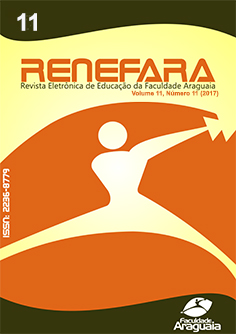COMPUTATIONAL MODELING OF TEST TENSIL OF WOODS WITH REINFORCEMENT OF RESINED LAMINATES OF FIBERS OF GLASS AND CARBON
Keywords:
Reinforcement in wood, glass fibers, carbon fiber, reinforcement with fibersAbstract
Reinforcement knowledge demands from the designer a broad view of theoretical and practical behavior for the material of the structure. In this case, as wood structures have a characteristic of being able to exchange damaged parts. However, instead of changing a piece one can reinforce it locally, or even a piece as a whole. Thus, one of the methods used and the reinforcement of fibers such as, for example, carbon, aramid or glass. Thus, in order to better understand the behavior of this work in this work, the aim was to perform a numerical modeling of wood pieces cut in half, subjected to traction and reinforced with carbon or glass fibers. The modeling is carried out from a reference research, where the wood of Eucalyptus grandis in natura and autoclaved was introduced, with the use of epoxy and tested by traction. It is worth mentioning that a wood is cut in half. Thus, a transfer of traction from the cut sections is done only by the fibrous reflux. The modeling developed in the DIANA ® program is carried out from tests and then validated. Validation occurs via maximum force and burst modes. After validating the behavior of the mesh, a rate of reinforcement area, carbon and glass, varies in the wood. From this parametric analysis, it is verified the influence of the variation of the area of reinforcement on the final resistance to the traction of the reinforced wood and its modes of rupture.
Downloads
Published
Issue
Section
License
The copyright of the published articles will be transferred to the Uniaaraguaia Magazine, allowing its subsequent reproduction as transcription and with due citation of source. In the event of acceptance and before the publication of the article, the plaintiff (s) shall write a statement formally transferring copyright to the magazine.
The author may also print and distribute copies of his article, provided that he mentions that the rights belong to the Uniaaraguaia Magazine.
Author rights include the right to reproduce in full or partly by any means, distribute this article, including figures and photographs.
By submitting originals to the Uniaaraguaia magazine, the author or authors express agreement with the following terms:
a) Authors maintain copyright and grant Uniaraguaia magazine the right of first publication, with the work simultaneously licensed under the Creative Commons Attribution license that allows the sharing of work with recognition of the authorship and initial publication in this magazine.
b) Authors are authorized to assume additional contracts separately, for non-expiration distribution of the work version published in this magazine (eg publish in institutional repository or as book chapter), with recognition of authorship and initial publication in this journal.
c) Authors are allowed and are encouraged to publish and distribute their work online (eg in institutional repositories or on their personal page) to any point before or during the editorial process, as this can generate productive changes as well as increase the impact and citation of published work.

